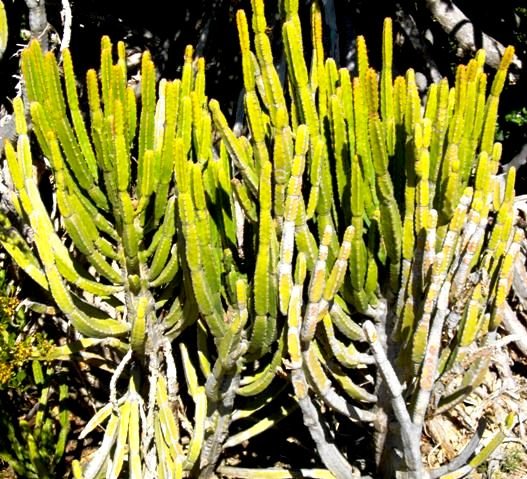Euphorbia tetragona stems

The honey euphorbia, as Euphorbia tetragona is known locally, does produce honey, but not a very palatable kind for humans. Bees thrive on Euphorbia pollen of many species in many regions. In some cases they benefit from the fact that their honey causes a burning sensation in people’s throats, leaving more of it for their own consumption.
Although the name says four angled (tetragona), some of the branchlets of this tree actually have five angles. The edges are slightly tubercled, the flat sides smooth and green. The stems have irregularly spaced slight constrictions indicating seasonal growth changes. The stems gradually lose their capacity to photosynthesise lower down, becoming whitish grey as can be seen here.
The inflorescence is greenish yellow with horizontal cyathia. Next to every cyathium stalk two bracts can be found. The fruit capsule is nearly globose and three-lobed (Coates Palgrave, 2002).

